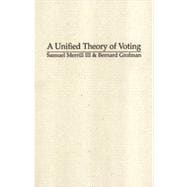
| List of Tables and Figures | p. ix |
| Acknowledgements | p. xiii |
| Introduction | p. 1 |
| Models of Voter Behavior | p. 17 |
| Alternative Models of Issue Voting | p. 19 |
| A Unified Model of Issue Voting: Proximity, Direction, and Intensity | p. 38 |
| Comparing the Empirical Fit of the Directional and Proximity Models for Voter Utility Functions | p. 52 |
| Empirical Model Fitting Using the Unified Model: Voter Utility | p. 67 |
| Empirical Fitting of Probabilistic Models of Voter Choice in Two-Party Electorates | p. 81 |
| Empirical Fitting of Probabilistic Models of Voter Choice in Multiparty Electorates | p. 91 |
| Models of Party or Candidate Behavior and Strategy | p. 107 |
| Equilibrium Strategies for Two-Candidate Directional Spatial Models | p. 109 |
| Long-Term Dynamics of Voter Choice and Party Strategy | p. 128 |
| Strategy and Equilibria in Multicandidate Elections | p. 144 |
| Strategy Under Alternative Multicandidate Voting Procedures | p. 158 |
| Postscript: Taking Stock of What's Been Done and What Still Needs to Be Done | p. 164 |
| Appendices | p. 170 |
| Glossary of Symbols | p. 195 |
| References | p. 196 |
| Index | p. 207 |
| Table of Contents provided by Publisher. All Rights Reserved. |
The New copy of this book will include any supplemental materials advertised. Please check the title of the book to determine if it should include any access cards, study guides, lab manuals, CDs, etc.
The Used, Rental and eBook copies of this book are not guaranteed to include any supplemental materials. Typically, only the book itself is included. This is true even if the title states it includes any access cards, study guides, lab manuals, CDs, etc.